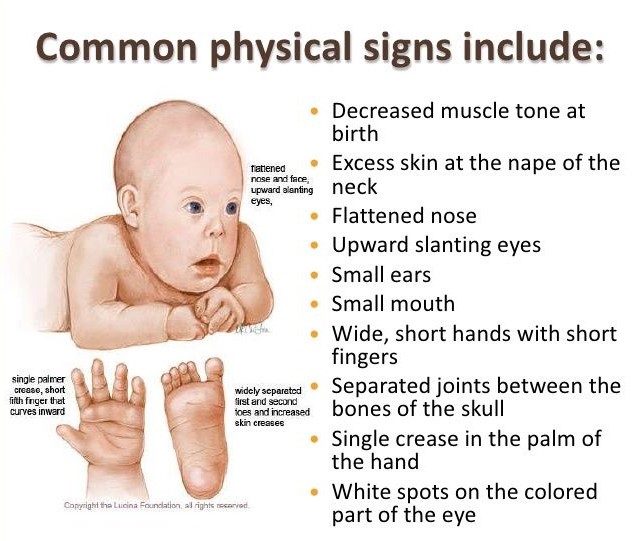
What Causes Down Syndrome?
Down syndrome is a chromosomal condition associated with intellectual disability. It results from an accident in cell development leading to 47 chromosomes instead of the usual 46. This extra chromosome alters the development of the body and brain. The condition is generally diagnosed shortly after birth through chromosome tests.
Incidence and Demographics
- Occurs in 1 in 1,000 live births.
- Higher likelihood in children born to mothers over 35 years of age.
- Accounts for 20% of Down syndrome births although only 5 to 8% of pregnancies occur in women over 35.
Down syndrome occurs across all cultures and demographics, indicating there is no single cause of Down syndrome influenced by environment or ethnicity.
Down Syndrome Symptoms and Features
Physical Characteristics
- Flat-bridged nose and slanting, almond-shaped eyes.
- Protruded abdomen and short stature.
- Short fingers and limbs, and a tendency to be overweight.
- Slanted eyes and a small oral cavity with a protruding tongue.
- Structural abnormalities in the lungs and airway.
Understanding the features of Down syndrome helps in providing timely interventions for related health issues.
Motor and Sensory Challenges
Children with Down syndrome may exhibit decreased kinesthetic awareness and balance, leading to challenges in activities requiring physical coordination.
Associated Health Risks
- 40 to 60% may have congenital heart disease.
- Increased susceptibility to pulmonary problems.
- Vision and auditory challenges affecting learning and development.
Teaching Tips for Students with Down Syndrome
- Adapt cardiovascular and agility activities to individual needs.
- Utilize alternative communication methods as necessary.
- Incorporate family into devising and executing solutions.
- Encourage muscle strengthening, especially around joints.
- Emphasize personal care, nutrition, and appropriate activity levels.
Recognizing and Managing Atlantoaxial Instability (AAI)
AAI is increased mobility between the first and second cervical vertebrae. It affects 15% of children with Down syndrome but often remains asymptomatic without subluxation. Monitoring through x-rays and symptom awareness is crucial.
Signs of AAI include:
- Changes in bowel or bladder function.
- Difficulty in walking or neck pain.
- Progressive clumsiness and coordination loss.
- Require adherence to physician’s activity guidelines and medical records access to ensure safe participation in physical activities.
For an in-depth exploration, our full guide dissects key characteristics of developmental groups with real-life examples and quizzes.
Want detailed practice tips to ace the NBCOT® exam? Join now for full access!
What causes Down syndrome?
Down syndrome is caused by a chromosomal condition where an extra chromosome (47 instead of the usual 46) occurs due to an accident in cell development. This extra chromosome affects the development of the body and brain.
What are the common physical characteristics of Down syndrome?
Common physical features of Down syndrome include a flat-bridged nose, slanting almond-shaped eyes, a protruded abdomen, short stature, short fingers and limbs, a small oral cavity with a protruding tongue, and structural abnormalities in the lungs and airway.
What health risks are associated with Down syndrome?
Individuals with Down syndrome are at increased risk for congenital heart disease (40-60% prevalence), pulmonary problems, vision and auditory challenges, which can impact learning and development.
How can teaching methods be adapted for students with Down syndrome?
Teaching methods can be adapted by tailoring cardiovascular and agility activities, using alternative communication methods, involving family in solution planning, focusing on muscle strengthening, and emphasizing personal care and nutrition.
What is atlantoaxial instability and how is it managed in children with Down syndrome?
Atlantoaxial instability (AAI) is increased mobility between the first and second cervical vertebrae, affecting 15% of children with Down syndrome. Management includes monitoring with x-rays, staying alert to symptoms like changes in bowel function, and adhering to physician’s activity guidelines to ensure safe physical participation.



